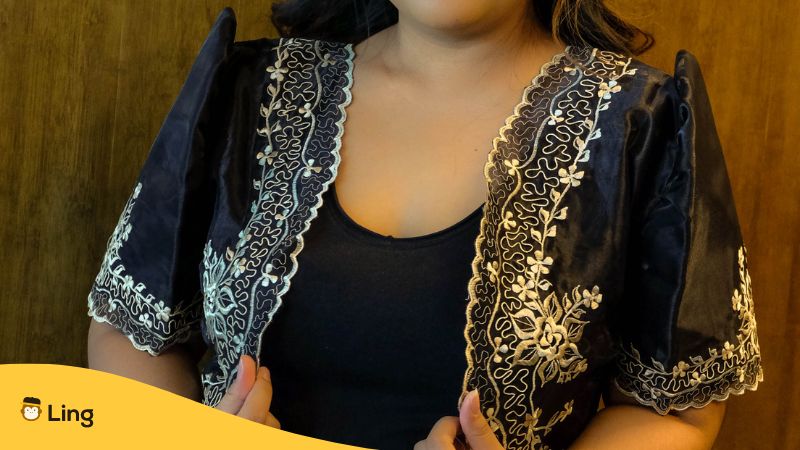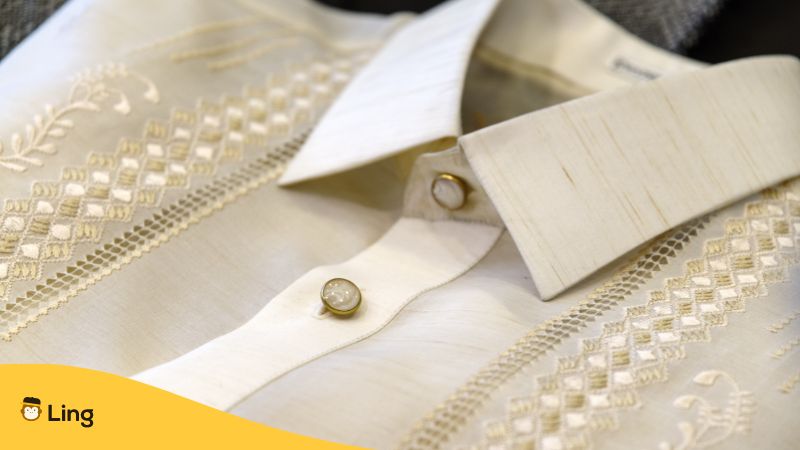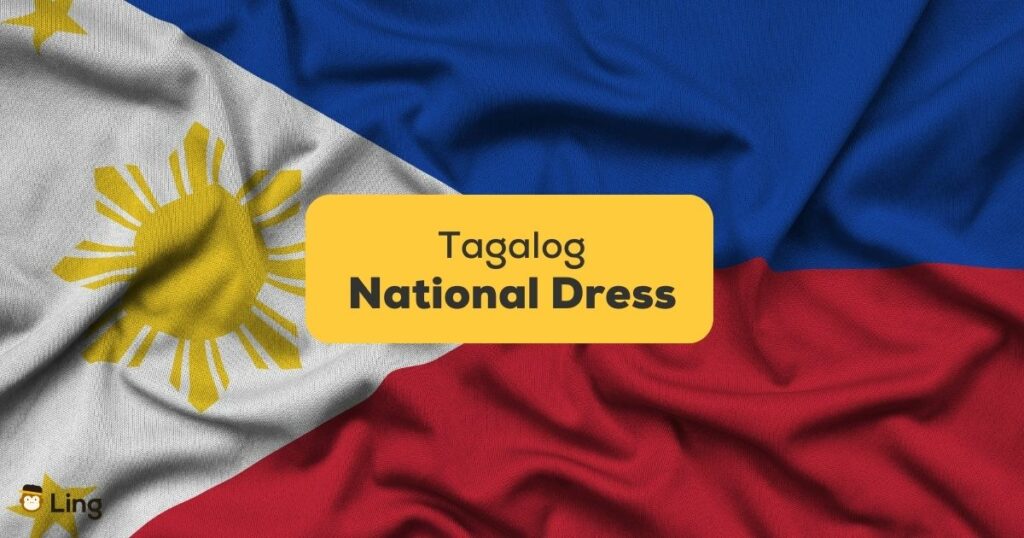The Tagalog National Dress—an enchanting blend of elegance and culture that sweeps you into a world where fashion becomes a captivating lesson, and every stitch tells a story of its origin.
Imagine walking in Intramuros and seeing this wonderful and unique national attire. What is it made of? You wonder about the glistening beauty of Filipino people that is amplified by the dress. “What exactly is it?”—your curiosity is reaching its peak.
Buckle up as we embark on a colorful journey through the mesmerizing world of the traditional clothing of the Philippines, where threads weave tales of tradition, style, and Filipino pride!
The Origins Of The Tagalog National Dress
The baro at saya (contracted as baro’t saya), our national dress, emerged in the 16th century. It’s a delightful fusion of indigenous Filipino and Spanish colonial styles. Crafted from materials like piña (pineapple), jusi (abaca fibers), and Mindanao silk, the baro’t saya showcases both the Philippines’ natural resources and skilled craftsmanship.
While the baro’t saya is the national dress, each region adds its own flair with unique styles, colors, and embellishments. Over time, influences from Spain, the United States, and Japan have enriched our national costume, making it a colorful tapestry slightly influenced by foreign peeps. Nevertheless, it remains distinct from European-style clothing. Today, Filipino fashion designers fuse tradition with modernity, using indigenous textiles to create contemporary masterpieces.
In essence, the history of the Philippine national dress is a story of cultural resilience and creative evolution, celebrating our heritage while adapting to the ever-changing world of fashion.

Essential Components Of The Baro’t Saya
The traditional Filipino outfit is a fascinating tapestry of culture and history, composed of four essential elements that have evolved over generations.
- The Blouse: Known as “baro” or “camisa,” this is the elegant top that sets the tone for the entire ensemble. Often adorned with intricate embroidery or lace, it reflects the wearer’s sense of style and sophistication.
- The Long Skirt: The “saya” or “falda” takes center stage as the lower half of the outfit. It’s more than just a piece of clothing; it’s a canvas for artistry. Skirt lengths and designs can vary, offering a glimpse into the wearer’s regional identity and personal taste. However, it is quite embedded in the Philippine culture that longer skirts make the wearer more “decent” and elegant.
- Shoulder Chic: Over the blouse, you’ll often find a stylish accessory known as “pañuelo,” “fichu,” or “alampay.” This piece not only adds a touch of elegance but also serves practical purposes like protecting from the sun or a sudden chill.
- The Skirt Cover: Completing the ensemble is the short rectangular cloth worn over the skirt, known as “tapis” or “patadyong.” This element not only adds an extra layer of flair but also showcases the wearer’s attention to detail.
Variants Of The Baro’t Saya
Baro’t saya, now more commonly known as “Filipiniana,” has its different styles: traje de mestiza, terno, and kimona. Each one has resemblances with the other, yet is distinct. Let us look at them!
Traje De Mestiza
Also known as the María Clara gown, a classy Filipino dress, it has quite a history. It got its name from the famous character in the novel “Noli Me Tángere” by José Rizal. María Clara is the epitome of elegance and beauty in that novel, and she always wears that dress.
Wondering about its meaning, which sounds a bit like Spanish? Well, “Traje” means “dress” or “outfit” in Spanish, and “Mestiza” signifies “of mixed blood.” That is because, in the Spanish colonial times of the Philippines, the “mestiza” (Spanish-Filipino female) and “mestizo” (Spanish-Filipino male) were often middle class or elite because of their relation with the Spanish. In other words, traje de mestiza is a dress most commonly used by those who have the privilege to wear it, namely higher-class people.

Terno
Terno is the modern version of the María Clara dress. Its style is continuously changing depending on the stylist, but the main component of butterfly sleeves is the one that always remains. This is the type of Filipiniana that is commonly used in beauty pageants like the Miss Universe.
Kimona
Meet the Kimona, a traditional blouse from the Visayan islands in the Philippines. Yep, this is a Kimona and not a Kimono (a traditional Japanese attire). It’s like a see-through work of art, usually made from pineapple fiber. The Kimona loves to pair up with a knee-length skirt featuring the Patadyong pattern—a plaid or a stripe pattern.
Originally, the Kimona was worn casually or formally, but today it’s popular for dancing and a fashion statement. Some versions even use sheer tulle with sequins, making it perfect for glamorous evenings. So, whether it’s a cultural dance or a glitzy night out, the Kimona knows how to steal the show with its transparent charm!

Barong Tagalog
Men have their own national dress, too! Barong tagalog is the men’s dress shirt, the counterpart of baro’t saya. This is more commonly just called “barong.”
It’s a unique blend of native Filipino and Spanish clothing styles. Traditionally, it’s crafted from sheer fabrics like piña (pineapple fiber) or abacá (banana fiber), kind of similar to the baro’t saya. However, in modern times, more affordable materials like organza silk, ramie, or polyester are also used.
This iconic attire is a common choice for formal or semiformal occasions in Filipino culture. One distinctive feature is that it’s typically worn untucked over an undershirt and paired with belted trousers and dress shoes. I recommend you check and wear barong tagalog if you ever visit the Philippines; it has an elegant and “pure” touch to it.
You can learn more than the Tagalog national dress, you can also learn its language! Interested to learn its nouns or even excuses? Look no further than Ling!
Learn The Tagalog Language With Ling!
Why is the Ling app the ultimate choice for learning Tagalog? It’s all about fun! Tagalog learning becomes an adventure with engaging games and bite-sized lessons. You’ll dive into writing, speaking, grammar, and reading, ensuring a well-rounded experience. Plus, checkpoint quizzes keep you on track.
Learn at your own pace, anytime, anywhere – The Ling app is flexible and available on the web and mobile. Say goodbye to boring language learning; with Ling, Tagalog is a thrilling journey to mastery!
Give it a try by downloading it on the Play Store or App Store!



































































